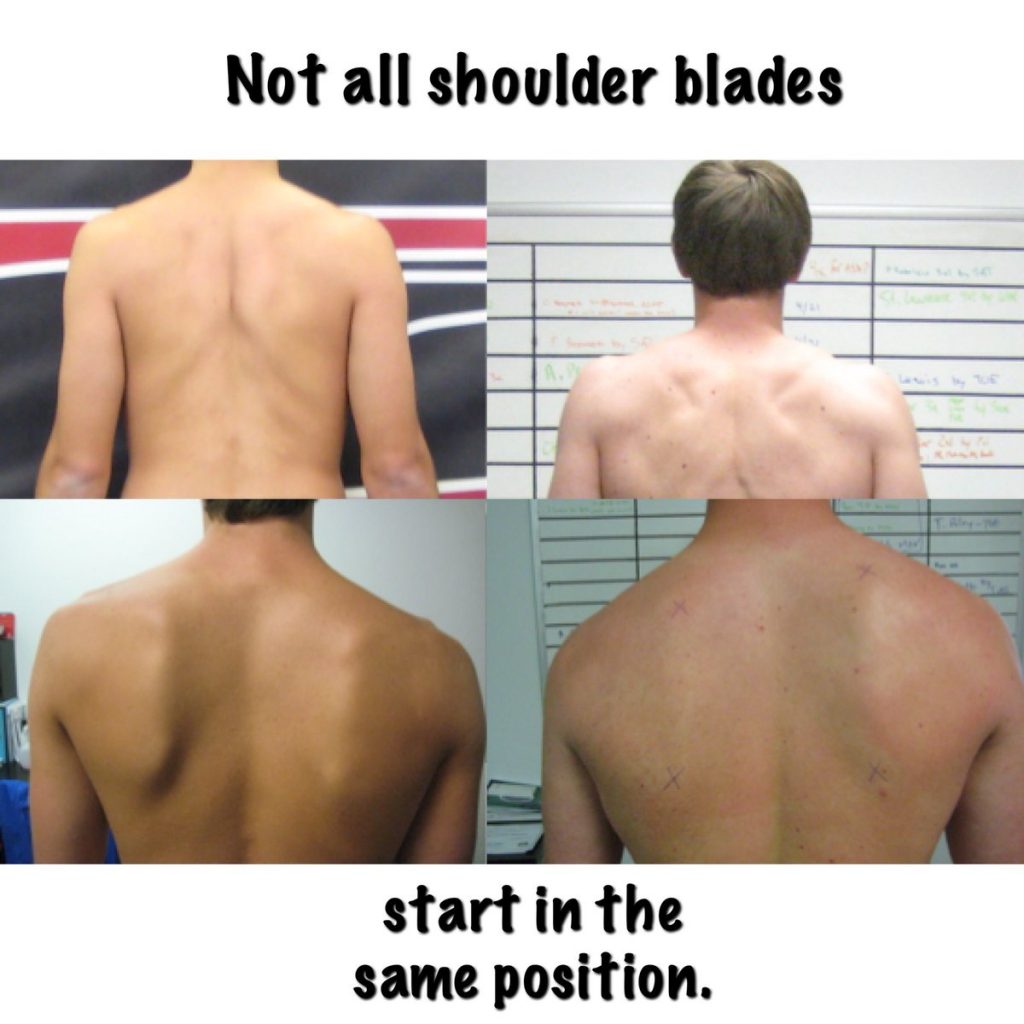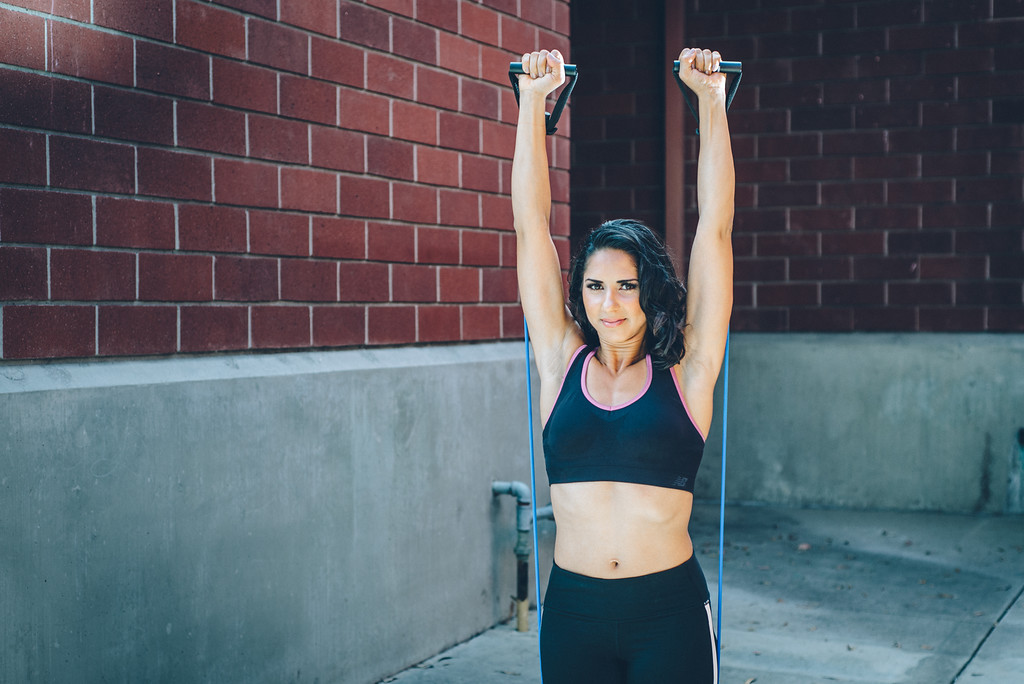When it comes to cuing our clients or using cues on ourselves, we have to consider this fact: Not all cues are right for every body.
Saying things like “activate your core” or “turn on your lats” is oftentimes gibberish passed down from one CPT manual to trainer to another, until it makes it’s way down to Sally, the stressed out accountant who doesn’t even know where her lats are!
Our shoulders in particular seem to suffer the most from pointless or overzealous cuing, and I’m here to call them out because I feel they are a huge disservice to the majority of trainees.
Not all pulling exercises are created equal
Therortically, we should be pulling more than we push in training. But in practice, it’s not that simple. We have to dig into the details like:
- Individual posture
- Individual limitations or weaknesses
- Training goals
This might sound obvious for trainers, but if you’re just a general meathead who likes to pop into a CrossFit box and smash barbells around you might not be aware how your posture, goals, or limitations might be contributing to unhealthy shoulders (and possibly injury!).
It’s not enough to say “Jane, you need to do more rows than push exercises” because Jane might end up doing the wrong rowing exercise for her needs!
Since shoulder injuries have skyrocketed in the general population, I think it’s worth re-thinking our push/pull exercises and the cues that may be exacerbating the problem.
The Top Cues Destroying Your Shoulders
#1 “Squeeze the shoulder blades together”
This is one of the most overused cue trainers use in rowing exercises. While it’s not inherently wrong to do this, this cue might actually exacerbate a problem rather than fix it.
Shoulder expert Eric Cressey made a great point when he tweeted out this picture below:

For someone with a military posture, like the athlete below, the cue to bring the shoulder blades together isn’t doing him any favors. In this scenario, the rhomboids are overactive and his shoulder blades “crowd” the spine. His shoulder blades start together, so why would we cue that some more?

He’s likely very limited in upward rotation of the shoulder blade and therefore, needs less, not more horizontal rowing exercises like cable rows that force him to squeeze his scaps closer together. This is why just saying “Hey Johnny, do more rows” isn’t specific enough, and why this cue serves only to make his posture worse.
If this is you, pressing exercises that emphasize upward rotation of the shoulder blade will be a lot more helpful than rowing exercises that force you to squeeze the shoulder blades together. Instead, opt for exercises or cues that recruit your teres minor/major and serratus anterior, not your overactive rhomboids!
One of the best pressing exercises I’ve used for myself and my clients with this posture, or who aren’t ready for a full overhead press is the landmine press.
Landmine overhead press
https://www.instagram.com/p/BQGf1sogA9g/?taken-by=trishdfit
Unlike an incline DB bench press (which is okay but not great), the landmine variation gives the shoulder bade more freedom to move around. In the bench press, our shoulders are “pinned” down to the bench, not allowing for a lot of ROM of the scapulae.
This is the exercise I used as I made my way back to overhead movements post-injury and I’ve seen it work wonders for clients with limited shoulder mobility or a military posture.
#2 “Shrug your shoulders”
More commonly used in an upright row, barbell snatch and power clean (all pulling exercises in their own right), the “shrug your shoulders” cue encourages upper trapezius dominance.
Strong traps are important for strong, healthy shoulders but they’re not the only thing. You have upper, middle, and lower trapezius muscles. Going back to Cressey’s photo above, if someone’s shoulder blade already starts in that shrugged position, then telling them to shrug their shoulders in a vertical pulling exercise isn’t going to help them long-term.
Many of my clients with high-stress jobs have a tendency to let their upper traps take over everything; it’s where they hold tension and stress all day long. To counteract this, we replace upper trap dominant pulling exercises with alternatives that emphasize the mid and lower traps.
You can use parts of the Y-T-W exercise to encourage the lower and middle trapezius to fire and give people a little motor control like some of the drills below:
I also really like this progression of the prone Y from Tony Gentilcore, which does include a shrug. It’s an advanced progression of the exercise above:
Now let’s say you’re a meathead with strong upper traps. Does this mean shrugging your shoulders is a no-no?
Not exactly.
But it might be worth looking at whether that dominance is creating a compensation elsewhere in the body like hyperextension in the low back, forward head posture, and/or ribcage flare. If it is, then you may want to cut back on the overhead presses and shurgs for a while, and focus on pulling movements that activate the mid and lower trapezius muscles, as well as the serratus anterior.
Here’s a good exercise I picked up from Lee Boyce that I really like for this:
The goal here is to train weaker muscles as it pertains to your shoulder. This might not be the sexiest exercise around or even help give you boulder shoulders, but it is a much better option for those with overzealous upper traps.
#3 “Shoulder blades down and back”
I have a love/hate relationship with this cue because it works fairly well but going back to Cressey’s point above, you have to look at where one’s shoulder blades start.
For anyone who has a downward slope of the shoulders, like in the two athletes at the bottom, this cue is a no-no (again, thanks to Eric for these photos!)

A couple of things are happening here in this downward slope posture that inhibits healthy movement of the shoulders:
- The lats are kicking in overdrive, causing them to shorten and stiffen and even pull down on the shoulder blades
- The upper traps may or may not be weak/stretched/lengthened. Sometimes, there are asymmetries
- Rhomboids may or may not also drag the shoulder blades closer to the spine like in Cue #1
Someone with this posture needs to nix lat-dominant exercises like chin-ups, lat pull-downs, and farmer’s carries for a while in order to deactivate the lats and encourage shoulder flexion instead.
I’d say most meathheads are very lat dominant as is. Not only does it look good but you need that strength to lift heavy things without causing injury. But if you are very lat dominant and have limited shoulder flexion (i.e can’t get those arms overhead) just imagine all the compensations that have to happen to stabilize your shoulder joint when you are doing pull-ups, snatches, and overhead squats!
Instead of adding more lat-specific pulling exercises (like deadlifts and pull-ups) and using this cue of “pull your shoulder blades back and down” we can use exercises like:
- Single arm bottoms up KB waiter’s Walk instead of a suitcase farmer’s carry
- Goblet variations of any leg exercise where you’d normally hold the dumbbells or kettlebells by your side
- More squats, less deadlifts
- Dumbbell batwings (a la Dan John)
- Face pull variations
Then slowly make your way back to lat-dominant pulling exercises with landmine variations, like single-arm landmine pulls, meadows rows, and T-bar rows.
For more landmine exercises, I wrote an article you can check out here
Find what works for you
There is a lot more that goes into building healthy shoulders than this article has time for, and when I want to dig into the nuances of training the shoulder girdle, I look to Eric Cressey, Tony Gentilcore, and Dr. John Rusin to name a few.
The key to is balance out your push and pull exercises by ensuring the exercises make sense for where your body is at right now, not what you wish it could be.
If you’re coming back from a shoulder injury and want to return to overhead exercises, you might need to spend some time on non-overhead press movements or “middle of the road” exercises to build your capabilities back up.
If your shoulders feel great but you’re limited in some way, then perhaps doing a bunch of dumbbell rows won’t be as useful and you’ll need to rethink your pulls.

